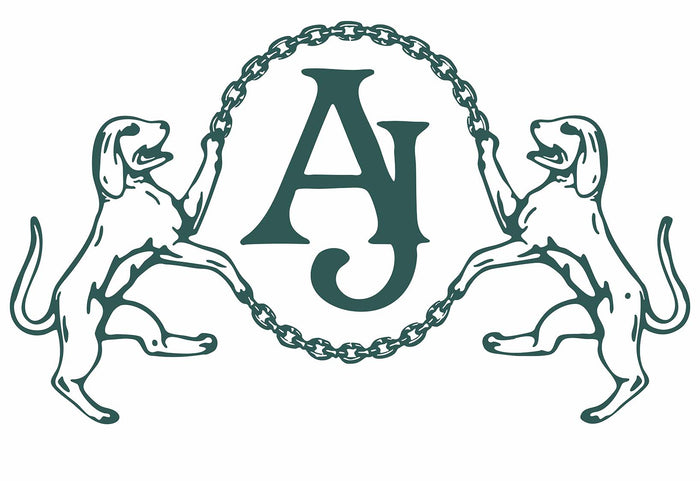R. & S. Garrard's appointment as Crown Jewellers in 1843 marked the beginning of an extraordinary relationship with the British Royal Family that would span over a century. Their workshops on Panton Street, and later Albemarle Street, produced the most significant royal wedding jewellery of the Victorian era, from Queen Victoria's treasured pieces to commissions for her children and grandchildren. The firm's ledgers, preserved in the Royal Archives, provide unparalleled insight into the creation, cost, and craftsmanship of Victorian royal wedding jewellery.
The Rise of Garrard as Crown Jewellers
Robert Garrard inherited the business from his father in 1818, transforming a respectable goldsmithing firm into the premier royal jeweller of the Victorian age. The partnership with his brother Sebastian, forming R. & S. Garrard, combined artistic vision with technical excellence that attracted royal patronage even before their official appointment.
Early Royal Commissions
Prior to their formal appointment as Crown Jewellers, Garrard had already established a reputation for exceptional work. Their ability to work with unconventional materials whilst maintaining the highest standards of craftsmanship proved particularly appealing to Prince Albert, whose Germanic sensibilities favoured sentimental pieces incorporating natural materials.
The firm's early work for the royal couple included mounting Scottish pebbles in silver, a commission recorded in October 1848 for the modest sum of £2 10s. This seemingly simple task required considerable skill to secure irregular natural stones whilst preserving their organic beauty. Such pieces demonstrate Garrard's versatility and willingness to execute unusual commissions that other jewellers might have declined.
Technical Innovations and Craftsmanship
Garrard's workshops pioneered numerous technical innovations that advanced Victorian jewellery manufacture. Their experiments with mounting techniques, metal alloys, and stone-cutting methods established new standards for the industry.
Revolutionary Mounting Techniques
In 1858, Garrard's craftsmen were recorded as "cutting heart-shaped earrings from granite and mounting ditto in silver," a commission charged to Prince Albert's account. This work required developing entirely new techniques for shaping extremely hard Scottish granite whilst achieving the smooth, curved surfaces necessary for comfortable wear. The firm invented specialised tools and adapted lapidary equipment to work with materials never before used in fine jewellery.
The mounting of masses of deer's teeth as studs, brooches, earrings, and necklaces presented different challenges. Each tooth required individual assessment for structural integrity, careful drilling to avoid fractures, and custom settings that accommodated natural variations in size and shape. Garrard's solution involved creating modular settings that could be adjusted during assembly, a technique later adopted throughout the jewellery industry.
The Fuchsia Suite: A Technical Masterpiece
The 1864 fuchsia pendant and earrings, incorporating milk teeth in gold and enamel settings, exemplified Garrard's ability to merge sentiment with sophistication. The technical challenge of setting children's teeth – fragile, irregular, and symbolically precious – within delicate floral designs required extraordinary skill. The enamel work, achieving the distinctive pink and purple of fuchsia blooms, involved multiple firings at precisely controlled temperatures to prevent damage to the organic material.
The Business of Royal Jewellery
Garrard's royal ledgers reveal fascinating details about the economics of Victorian royal jewellery. Prices ranged from modest sums for simple mountings to substantial investments in elaborate parures, reflecting both the democratic and exclusive aspects of royal patronage.
Pricing and Production
The October 1848 entry for mounting a pebble in silver as a brooch for £2 10s represents the lower end of Garrard's price range, equivalent to approximately £300 in modern currency. Such accessible pricing for certain commissions reflected Victoria and Albert's desire to support British craftsmanship at all levels.
Conversely, major commissions for state occasions involved substantial investments. Diamond parures could cost thousands of pounds, requiring months of work by teams of specialised craftsmen. The firm maintained separate workshops for different aspects of production: design studios, goldsmithing benches, stone-setting stations, enamelling furnaces, and engraving rooms.
Royal Warrant Responsibilities
As Crown Jewellers, Garrard assumed responsibilities beyond mere manufacture. They maintained and cleaned existing pieces, reset stones for changing fashions, and provided valuations for insurance. The firm also served as advisors on matters of protocol, ensuring jewellery choices appropriate for different occasions and foreign visits.
Notable Wedding Commissions
Garrard's workshop produced jewellery for numerous royal weddings throughout Victoria's reign, each commission reflecting evolving tastes whilst maintaining traditions established at the Queen's own wedding.
Princess Victoria's Wedding Jewels (1858)
For the Princess Royal's marriage to Prince Frederick of Prussia, Garrard created pieces that balanced British and German traditions. A small photograph of the Princess in her marriage dress, set in gold with a black velvet band, represented a modern innovation – the incorporation of photography into jewellery. This piece, combining new technology with traditional craftsmanship, exemplified Garrard's progressive approach.
Commemorative Pieces for Wedding Attendants
Garrard produced numerous pieces for wedding attendants, from elaborate brooches for train-bearers to simpler pins for household staff. Each piece required individual design and manufacture, as Victorian protocol demanded subtle gradations in quality reflecting the recipient's social position. The firm's ability to produce coherent suites whilst accommodating these hierarchical distinctions demonstrated their understanding of court culture.
Working with Unconventional Materials

Prince Albert's Germanic heritage introduced Garrard to commemorative jewellery traditions unfamiliar in Britain. The firm's willingness to work with unconventional materials – teeth, hair, photograph, pressed flowers – established new categories of sentimental jewellery.
Scottish Materials and Royal Favour
The acquisition of Balmoral in 1848 initiated what Garrard's ledgers term "the Scottish period." Cairngorms, agates, granites, and even ordinary pebbles from the estate became precious when mounted by royal jewellers. The 1848 cairngorm brooch, picked up by the Prince at Lochnagar in September and set with enamelled gold, seed pearls, and rubies, represents the finest of these Scottish pieces.
Working with Scottish materials required understanding their geological properties and symbolic significance. Different stones carried specific meanings: cairngorms for protection, agates for strength, garnets for loyalty. Garrard's designers incorporated these meanings into their compositions, creating pieces that functioned as talismans as well as ornaments.
The Garrard Design Process
Archival evidence reveals Garrard's meticulous design process, from initial sketches to finished pieces. Design books preserved in the firm's archives show multiple iterations of important commissions, with annotations in Prince Albert's hand suggesting modifications.
Collaboration with Royal Patrons
Prince Albert's involvement in design went beyond mere approval. His marginal notes on Garrard's drawings reveal sophisticated understanding of both aesthetics and technique. For the angel brooch of 1841, featuring wings pavé-set with diamonds, emeralds, and rubies, Albert provided detailed specifications for the enamel work depicting the angel's face, drawn from Renaissance sources in the Royal Collection.
Queen Victoria also participated actively in the design process, particularly for pieces intended as gifts. Her sketches, though less technically proficient than Albert's, conveyed clear emotional intentions that Garrard's designers skilfully translated into finished jewellery.
International Influence and Competition
Garrard's position as Crown Jewellers placed them at the centre of international jewellery fashion. Foreign royalty visiting London invariably called at Garrard's showrooms, spreading British jewellery styles throughout European courts.
The Great Exhibition of 1851
At the Great Exhibition, Garrard's display in the British section attracted enormous attention. Their exhibition pieces, whilst not for sale, demonstrated technical capabilities that established British jewellery as equal to French production. The firm's decision to show both ceremonial pieces and sentimental jewellery reflected Victorian values that elevated emotional significance alongside material splendour.
Influence on British Jewellery Trade
Garrard's royal commissions influenced the entire British jewellery industry. Birmingham manufacturers copied Garrard designs for mass production, whilst provincial jewellers advertised pieces "in the style of the Crown Jewellers." This dissemination of royal taste through commercial channels demonstrates how Garrard's work shaped Victorian material culture beyond elite circles.
Legacy and Continuing Influence
Garrard's work for Queen Victoria established templates that influenced royal jewellery into the twentieth century. The firm continued as Crown Jewellers until 2007, maintaining traditions established in Victoria's reign whilst adapting to changing times.
Preservation of Techniques
Many techniques developed in Garrard's Victorian workshops remain industry standards. Their methods for working with unconventional materials, particularly organic substances in fine jewellery settings, established protocols still followed by contemporary conservators. The firm's detailed records provide invaluable information for authenticating and restoring Victorian pieces.
Garrard's ledgers, design books, and correspondence preserved in various archives constitute an irreplaceable record of Victorian jewellery production. These documents reveal not merely business transactions but the intimate relationship between jewellers and patrons, the evolution of taste, and the technical innovations that defined an era. Through their work for Queen Victoria, R. & S. Garrard shaped not only royal tradition but the broader culture of Victorian jewellery, establishing standards of craftsmanship and sentiment that continue to influence how we understand and value antique jewellery today.


